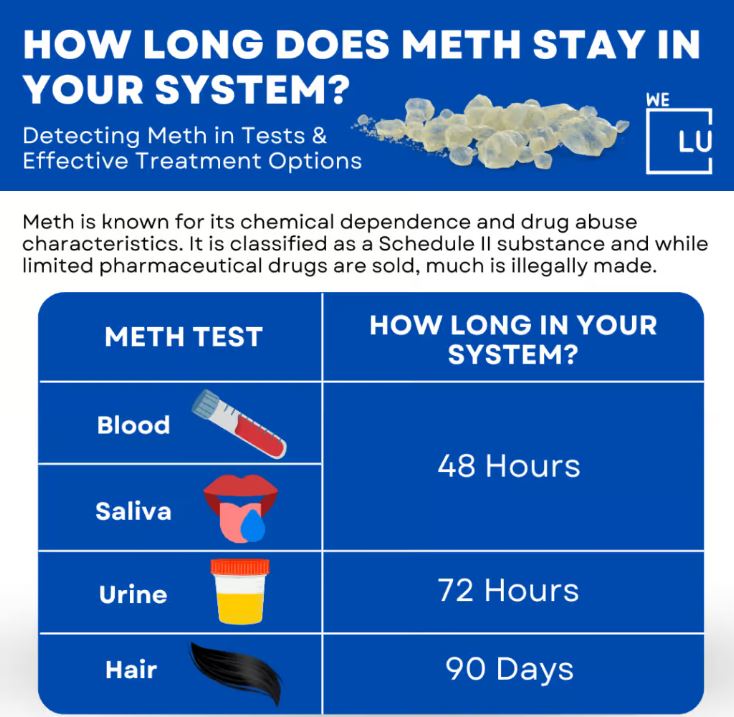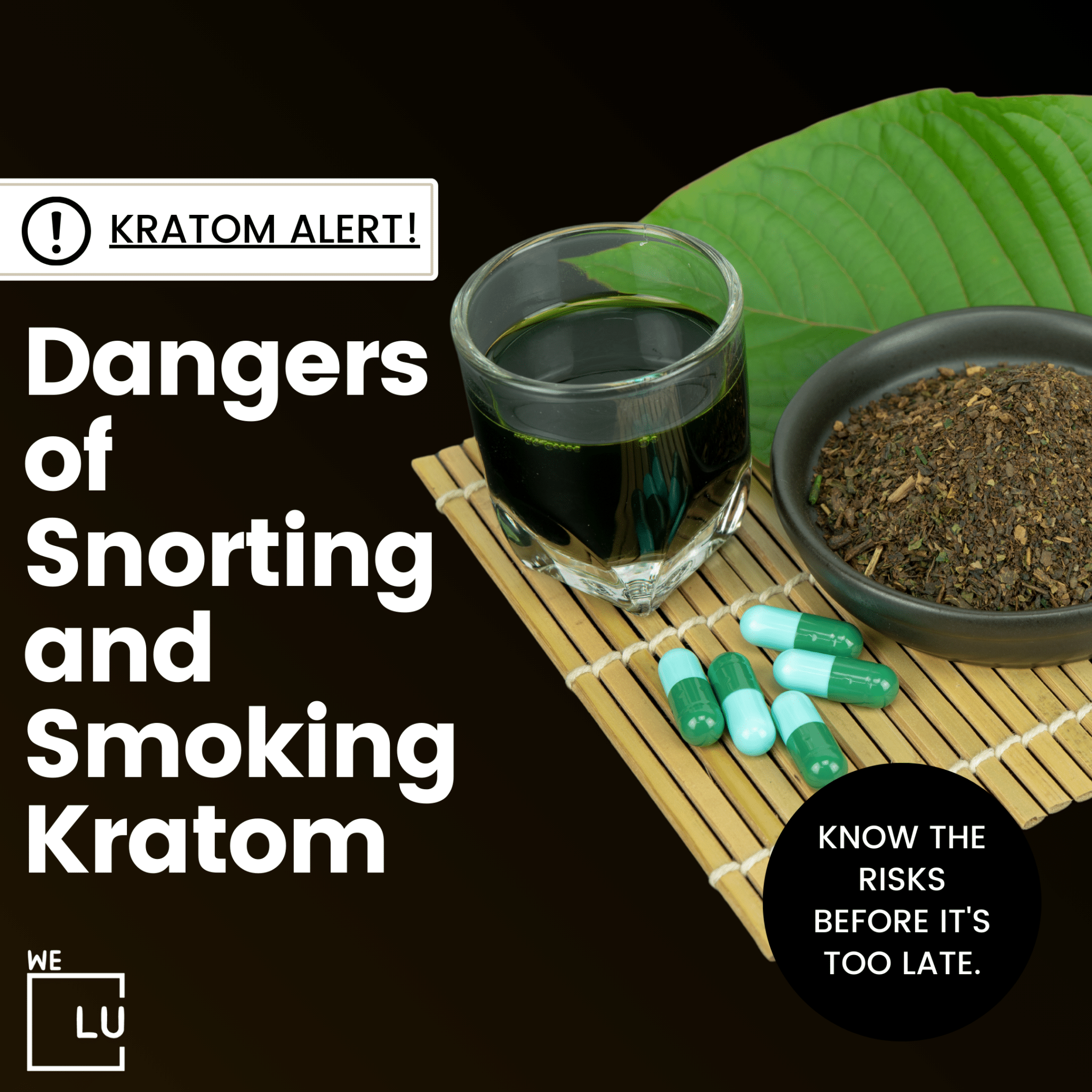What Are Meth Eyes?
“Meth eyes” typically refers to the physical changes in a person’s eyes that can occur as a result of methamphetamine use. Methamphetamine, commonly known as meth, is a potent and highly addictive stimulant that profoundly impacts both the body and mind. Notoriously recognized for its intense euphoric effects and increased energy, methamphetamine use comes with a host of detrimental consequences. Addressing both the physical effects on the eyes and the underlying addiction is critical for a comprehensive and practical approach to recovery.
Common characteristics of “meth eyes” include:
- Dilated Pupils or Meth Pupils: Methamphetamine use often leads to the dilation of the pupils, causing them to appear larger than usual.
- Rapid Eye Movement: Users may experience rapid and involuntary eye movements, sometimes called “twitching” or “darting” eyes.
- Red or Bloodshot Eyes: Methamphetamine use can lead to dry eyes and irritation, resulting in red or bloodshot eyes.
- Dark Circles or Bags: Chronic methamphetamine use may contribute to poor sleep patterns and overall fatigue, leading to the development of dark circles or bags under the eyes.
- Staring or Glassy Eyes: Users may exhibit a vacant or glassy stare, indicating altered mental states or intense focus associated with the drug’s effects.
These signs are not exclusive to methamphetamine use, and other factors such as fatigue, stress, or certain medical conditions can also contribute to similar eye changes. Additionally, the physical effects of drug use can vary from person to person.
What Does Meth Do To Your Eyes?
Methamphetamine affects the eyes primarily due to its stimulation of the central nervous system. The drug increases the release of neurotransmitters like dopamine and norepinephrine, leading to various physiological responses.
One effect is the dilation of pupils, making them appear larger. This occurs because methamphetamine prompts the iris muscles to relax, allowing more light to enter the eyes. Additionally, the drug’s impact on tear production can result in dry eyes and irritation, contributing to redness. Changes in blood flow, both dilation and constriction of blood vessels, can further influence the appearance of bloodshot eyes.
The combination of these factors, along with rapid eye movements and a vacant stare, characterizes the observable effects of methamphetamine on the eyes.
Short-Term Effects
The short-term effects of methamphetamine on the eyes include:
- Pupil Dilation: Methamphetamine causes rapid dilation of the pupils (mydriasis), making them appear more prominent than usual.
- Rapid Eye Movement: Users may experience jittery or involuntary eye movements, reflecting the heightened activity of the central nervous system.
- Dry Eyes and Irritation: Methamphetamine decreases tear production, leading to dry eyes and potential discomfort or irritation.
- Red or Bloodshot Eyes: The drug can result in redness due to a combination of factors, including dry eyes and changes in blood flow.
- Staring or Glassy Eyes: Individuals under the influence of methamphetamine may exhibit a vacant or intense stare, indicating altered mental states.
Long-Term Effects
Long-term methamphetamine use can lead to more severe and lasting effects on eye health, often contributing to a range of issues. Some of the potential long-term effects of meth on the eyes include:
- Vision Problems: Chronic meth use may contribute to vision problems, including blurred vision or difficulty focusing.
- Retinal Damage: Prolonged methamphetamine use can lead to damage to the retina, the light-sensitive tissue at the back of the eye. This damage may affect vision.
- Glaucoma: Methamphetamine use has been associated with an increased risk of developing glaucoma, a condition characterized by increased pressure within the eye that can lead to optic nerve damage and vision loss.
- Cataracts: Long-term meth use may be linked to an increased risk of developing cataracts, a clouding of the eye’s lens that can lead to vision impairment.
- Dry Eye Syndrome: Chronic dry eyes, resulting from reduced tear production, can persist and contribute to ongoing discomfort and irritation.
- Conjunctivitis: Methamphetamine users may be more prone to developing conjunctivitis, an inflammation of the conjunctiva (the clear tissue covering the white part of the eye and lining the inner surface of the eyelids).
- Decreased Blinking and Corneal Damage: Persistent reduced blinking, often seen in meth users, can lead to inadequate lubrication of the cornea, potentially resulting in corneal damage.
These long-term effects are not exclusive to the eyes; methamphetamine abuse has widespread health implications, affecting cardiovascular, neurological, and mental health, among other systems. Seeking professional help for addiction and addressing the associated health consequences is crucial for individuals struggling with methamphetamine use. Regular eye exams can also help detect and manage any potential eye-related issues.

Skip To:
Learn More:
- What Does Meth Look Like? What Does Crystal Meth Look Like? Pictures of Meth.
- What Does Meth Taste Like? Identifying Meth by Taste
- Meth Head, Symptoms, Warning Signs, Dangers, Side Effects & Meth Addiction Treatments
- Long, Short, and Immediate Methamphetamine Effects
- Methamphetamine Detox, 3 Phases of Withdrawal & Treatment
- Skin Picking Disorder, Methamphetamines, Heroin, Cocaine & Other Skin Conditions
Addiction to Meth can cause a wide range of health problems and issues. If you are struggling with Meth Addiction, join others who have put their trust in We Level Up. Contact We Level Up now for your free and confidential consultation call.

Get Your Life Back
Find Hope & Recovery. Get Safe Comfortable Detox, Addiction Rehab & Dual Diagnosis High-Quality Care.
Hotline (855) 695-1160How Can You Tell Someone Has Meth Eyes?
Detecting “meth eyes” involves observing specific physical characteristics that may be indicative of methamphetamine use. While these signs are not exclusive to meth use and can be caused by other factors, a combination of the following may suggest potential methamphetamine influence:
- Dilated Pupils: Methamphetamine often causes noticeable dilation of the pupils, making them appear larger than usual.
- Rapid Eye Movement: Users may exhibit rapid and involuntary eye movements, commonly described as twitching or darting eyes.
- Red or Bloodshot Eyes: Chronic methamphetamine use can lead to dry eyes, irritation, and changes in blood flow, resulting in red or bloodshot eyes.
- Dark Circles or Bags Under Eyes: The drug’s impact on sleep patterns and fatigue may contribute to developing dark circles or bags under the eyes.
- Staring or Glassy Eyes: Users may display a vacant or glassy stare, indicating altered mental states or intense focus associated with the drug’s effects.
Approach such observations cautiously, as these signs can be caused by factors other than drug use, such as fatigue, stress, or certain medical conditions. Additionally, individuals may vary in their reactions to methamphetamine, and not everyone will exhibit the same physical signs.
If you suspect someone is using methamphetamine or struggling with substance abuse, approach the situation with empathy and seek professional guidance. Substance abuse is a complex issue, and individuals dealing with it may require support from healthcare professionals or addiction treatment services.
Get Help. Get Better. Get Your Life Back.
Searching for an Accredited Drug and Alcohol Rehab Centers in Near You?
Even if you have failed previously and relapsed, or are in the middle of a difficult crisis, we stand ready to support you. Our trusted behavioral health specialists will not give up on you. When you feel ready or just want someone to speak to about therapy alternatives to change your life call us. Even if we cannot assist you, we will lead you to wherever you can get support. There is no obligation. Call our hotline today.
FREE Addiction Hotline – Call 24/7Treatment For Meth Eyes
Taking methamphetamine can lead to a range of physical and mental health issues, including adverse effects on the eyes. If you suspect you may be experiencing eye problems related to current or past methamphetamine use, it is advisable to consult your healthcare provider. They can offer personalized recommendations for suitable treatment options based on your needs.
Addressing the visible effects of methamphetamine use on the eyes, often referred to as “meth eyes,” requires a multifaceted approach within the context of comprehensive addiction treatment. While treating the physical effects is crucial, it is equally important to focus on the underlying causes of methamphetamine use. From medical interventions to behavioral therapies, a tailored treatment plan can aid individuals in overcoming the challenges associated with methamphetamine addiction, promoting both physical and mental well-being. Here are a few things a medical professional might prescribe to treat meth eyes:
- Medication: Your doctor may prescribe corticosteroids to mitigate inflammation and swelling in the eyes. These medications can enhance vision and alleviate discomfort associated with eye damage resulting from meth use.
- Surgery: In certain instances, surgical intervention may be necessary to address structural damage caused by methamphetamine use.
- Lifestyle Changes: Implementing lifestyle modifications can be pivotal in reducing the risk of developing eye health issues or slowing their progression. For instance, quitting smoking is crucial, as cigarette smoke contains toxins that can exacerbate symptoms like dryness and irritation in the eyes. Additionally, avoiding exposure to bright lights or ultraviolet radiation can help safeguard your eyes from further harm associated with meth use.
- Eye Drops: People experiencing dryness or eye irritation due to methamphetamine use may be advised to use artificial tears or lubricating eye drops. Eye drops containing antihistamines can also alleviate itching associated with this condition.
Comfortable Facilities & Amenities
High-Quality Addiction & Mental Health Rehabilitation Treatment
Rehab Centers TourRenowned California Addiction Center. Serene Private Facilities. Inpatient rehab programs vary.
Addiction Helpline (855) 695-1160Proven recovery success experience, backed by a Team w/ History of:
15+
Years of Unified Experience
100s
5-Star Reviews Across Our Centers
10K
Recovery Success Stories Across Our Network
- Low Patient to Therapist Ratio
- Onsite Medical Detox Center
- Comprehensive Dual-Diagnosis Treatment
- Complimentary Family & Alumni Programs
- Coaching, Recovery & Personal Development Events
Other Side Effects Of Meth Use On The Body
Methamphetamine use poses profound and hazardous effects on the human body, extending far beyond the immediate sensations of euphoria and heightened energy that users seek. This potent stimulant significantly impacts both the physical and mental well-being of individuals. From cardiovascular complications such as increased heart rate to severe dental problems and skin issues, the toll on the body is extensive. Chronic methamphetamine use leads to weight loss, malnutrition, and disruptions in sleep patterns, contributing to a myriad of health concerns.
Moreover, the drug’s impact on the central nervous system gives rise to psychological disturbances, ranging from anxiety and aggression to hallucinations. Understanding the full spectrum of side effects is crucial, as it highlights the urgency of addressing methamphetamine addiction and its potentially irreversible consequences on overall health.
Here are some of the additional side effects associated with meth use:
- Cardiovascular Effects: Methamphetamine can cause an increase in heart rate, elevated blood pressure, and irregular heartbeats. Long-term use can contribute to the risk of heart attacks, strokes, and other cardiovascular issues.
- Dental Problems: Chronic methamphetamine use is associated with significant dental issues, often referred to as “meth mouth.” This can include tooth decay, gum disease, and teeth grinding.
- Weight Loss: Methamphetamine is an appetite suppressant, and prolonged use can lead to significant weight loss and malnutrition.
- Skin Problems: Users may experience skin issues such as itching, sores, and acne. Skin picking is a typical behavior among meth users, which can exacerbate skin problems.
- Hyperactivity: Methamphetamine is a stimulant that can cause increased energy, hyperactivity, and restlessness. This can contribute to erratic behavior and difficulty sleeping.
- Psychological Effects: Methamphetamine use can lead to anxiety, paranoia, aggression, hallucinations, and other psychological disturbances. Long-term use can result in severe mental health issues.
- Impaired Cognitive Function: Chronic use of methamphetamine can lead to cognitive deficits, memory loss, and poor decision-making.
- Increased Risk of Infections: Methamphetamine use may weaken the immune system, making users more susceptible to infections, including sexually transmitted infections (STIs).
- Respiratory Issues: Smoking or inhaling methamphetamine can lead to respiratory problems, including shortness of breath and respiratory distress.
- Gastrointestinal Problems: Methamphetamine use can cause nausea, vomiting, and abdominal pain. It may also lead to constipation.
- Sleep Disturbances: Users often experience disrupted sleep patterns, insomnia, and difficulty maintaining a regular sleep schedule.
The severity and manifestation of these side effects can vary among individuals, and long-term methamphetamine use can result in significant, sometimes irreversible, damage to both physical and mental health. Seeking professional help is crucial for individuals struggling with methamphetamine addiction.
World-class, Accredited, 5-Star Reviewed, Effective Addiction & Mental Health Programs. Complete Behavioral Health Inpatient Rehab, Detox plus Co-occuring Disorders Therapy.
CALL (855) 695-1160End the Addiction Pain. End the Emotional Rollercoaster. Get Your Life Back. Start Drug, Alcohol & Dual Diagnosis Mental Health Treatment Now. Get Free No-obligation Guidance by Substance Abuse Specialists Who Understand Addiction & Mental Health Recovery & Know How to Help.

What Is Meth?
Methamphetamine, commonly known as meth, is a powerful and highly addictive stimulant drug. It belongs to the amphetamine class and affects the central nervous system. Methamphetamine works by increasing the release of neurotransmitters, particularly dopamine, in the brain.
Dopamine is a chemical messenger associated with pleasure and reward. Methamphetamine not only enhances the release of dopamine but also inhibits its reuptake, leading to a prolonged presence in the brain. This results in heightened euphoria, increased energy, and alertness. However, the drug’s intense effects come with significant risks, including addiction, cardiovascular problems, dental issues, and severe psychological consequences. Methamphetamine use can have profound and detrimental impacts on both physical and mental health, making it a substance of grave concern.
Learn more about Meth Addiction:
How Long Does Meth Stay In Your System?
The duration that methamphetamine stays in your system can vary based on factors such as individual metabolism, frequency of use, and the method of ingestion. In general, methamphetamine can typically be detected in urine for up to 1-4 days after use. However, for chronic users or in cases of heavy use, it may be detectable for a more extended period, possibly up to a week or more.
In blood, methamphetamine is usually detectable for a shorter time, typically around 24-72 hours after use. Saliva tests can detect methamphetamine for a similar duration, usually up to 1-4 days. Hair follicle tests, which are less common, can show methamphetamine use for an extended period, potentially up to 90 days or even longer.
Individual variations and the specifics of each testing method can influence detection times. Suppose you have concerns about drug testing or are seeking information for a specific situation. In that case, it is recommended to consult with healthcare professionals or testing experts for more accurate and personalized information.

Experience Transformative Recovery at the We Level Up California Treatment Center.
See our authentic success stories. Get inspired. Get the help you deserve.



Start a New Life
Begin with a free call to an addiction & behavioral health treatment advisor. Learn more about our dual-diagnosis programs. The We Level Up treatment center network delivers recovery programs that vary by each treatment facility. Call to learn more.
- Personalized Care
- Caring Accountable Staff
- World-class Amenities
- Licensed & Accredited
- Renowned w/ 100s 5-Star Reviews
We’ll Call You
Faces of Meth Before & After Images Devastating Effects w/ Meth Face, Meth Mouth, Meth Soars and
Search Drug & Alcohol Rehab / Detox & Mental Health Topics & Resources
Sources
- CDC. Adverse Health Effects Associated with Living in a Former Methamphetamine Drug Laboratory — Victoria, Australia, 2015. Related: Meth Eyes, Meth Pupils, Pupils on Meth, Eyes on Meth, Crystl Meth Eyes, What Do Your Eyes Look Like On Meth
- NIDA. 2019, May 16. Methamphetamine DrugFacts.
- NIDA. 2021, April 13. What are the long-term effects of methamphetamine misuse?. Retrieved from https://www.drugabuse.gov/publications/research-reports/methamphetamine/what-are-long-term-effects-methamphetamine-misuse on 2021, December 29 Related: Meth Eyes, Meth Pupils, Pupils on Meth, Eyes on Meth, Crystl Meth Eyes, What Do Your Eyes Look Like On Meth
- National Institutes of Health (NIH) – Methamphetamine: https://medlineplus.gov/methamphetamine.html.
- National Criminal Justice Reference Service (NCJRS) – Methamphetamine: https://www.ncjrs.gov/ondcppubs/publications/policy/04meth.html.
- United States Department of Health and Human Services (HHS) – Methamphetamine: https://www.hhs.gov/ash/oah/adolescent-development/substance-use/drugs/stimulants/methamphetamine/index.html.




